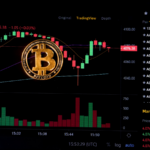In equity investments, risk is inevitable. Knowing how to determine your level of risk will help you manage your portfolio and make the right investment decisions that are right for you. And in this article, we’ll help you learn about risk tolerance (risk tolerance) in stock investing.
Table of Contents:
What is risk tolerance?
Risk tolerance is a measure to assess investors’ willingness to accept risk. Determining risk tolerance will help investors quantify their investment decisions, instead of emotional decisions.
Depending on factors such as age, monthly income, income stability, level of expenditure relative to income, volume of personal assets, time to achieve goals, knowledge … Investors have a different tolerance to risk.
Normally, risk tolerance is classified into 3 levels:
- Aggressive risk tolerance
- Moderate risk tolerance
- Conservative risk tolerance
Usually, young people who are new to the financial markets tend to actively trade and have a high risk tolerance. Meanwhile, older investors tend to reduce their risk tolerance to a lower level.
People with a large amount of investment capital but a high level of trading with a high volume will have a lower risk tolerance than someone with the same amount of capital but lower investment requirements.
Or, in terms of investment style, short-term investors have a lower level of risk than long-term investors.
Risk tolerance is often related to factors in investor psychology. This indicator is usually evaluated based on the percentage of risky assets that investors want in their portfolio.
For example, a person who wants to allocate 60% of his assets in stocks has a greater willingness to take risks than an investor who wants to hold only 10% of the shares and 90% of the government bonds.
Capital management based on risk tolerance
1. High risk tolerance
Aggressive investors are usually those who have a good understanding of market trends and stock investments. This allows them to trade highly volatile instruments, such as small-cap companies or high-risk options. With these investors, profit and risk are both set to the maximum.
Simply put, investors with a high risk tolerance often put all their capital into the stock market, rather than allocating their portfolios to bonds or other assets to limit their investment. They generally prefer to invest in high-growth regions of the world, such as emerging markets, BRIC countries or Asian countries excluding Japan.
Owning 100% of the stocks in your portfolio also means high risk. That is why, many traders choose to pour money into mutual funds with dozens, hundreds of different shares.
2. Average risk tolerance
Medium-risk traders often mix portfolio allocation and time balance. In particular, instead of “putting all the eggs in one basket,” investors will combine different asset classes: stocks, mutual funds, and bonds. The investment period is usually medium-term, lasting 5-10 years.
The average risk-loving investor typically pursues a 50/50 structure, with half of their portfolio being made up of growing stocks or paying dividends or funds managed with large-cap stocks.
Large-cap stocks attract these investors because they are growing companies with stable dividend payments.
3. Low risk tolerance
Conservative investors with low risk tolerance often prioritize capital preservation over market returns, willing to accept little or no volatility in their portfolios.
Therefore, conservative investors often seek to protect the value of their portfolios by buying low-risk securities such as fixed income securities, short-term debt securities, blue-collar securities. -chips or shares of large-cap companies or certificates of deposit (CDs) for the preservation of income and capital.
Compared to active investors or the average risk-loving investor, conservative investors earn much less returns. But with the advantage of security, this style of trading is recommended for those approaching retirement age.
As an investor, you need to consider profit and loss in the worst case by asset class to calculate your risk tolerance. In doing so, you can orient your trading style and make more accurate and effective decisions.


